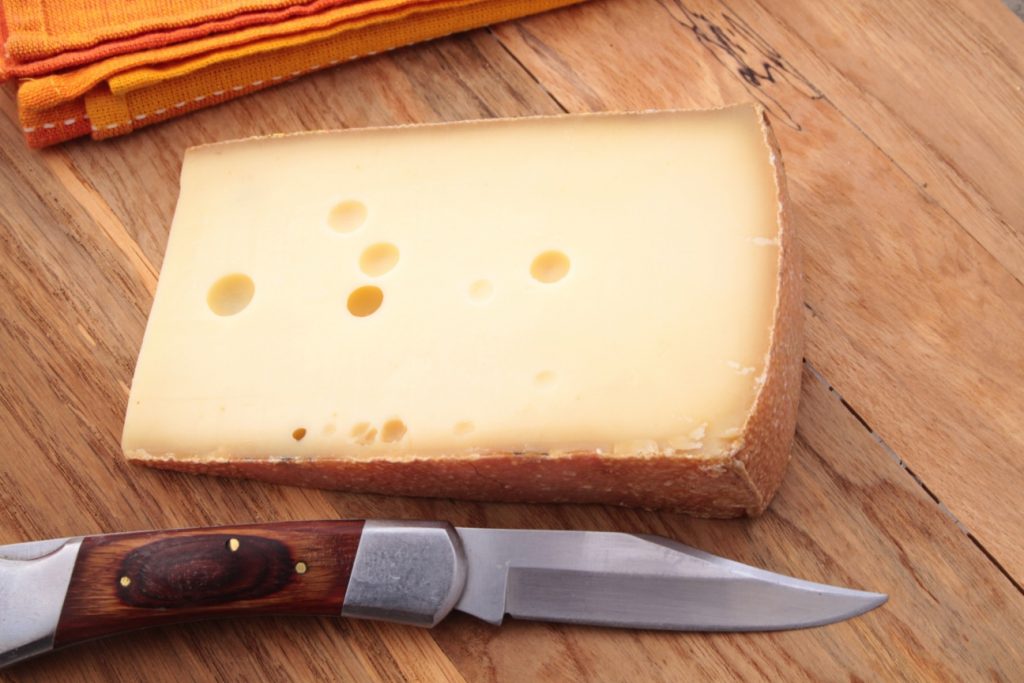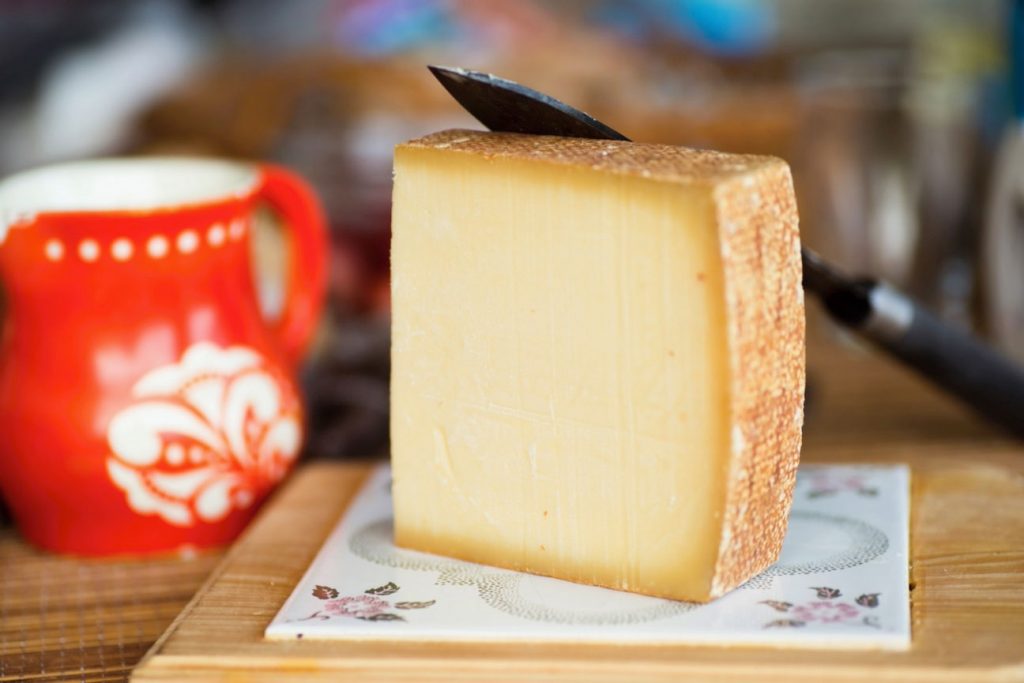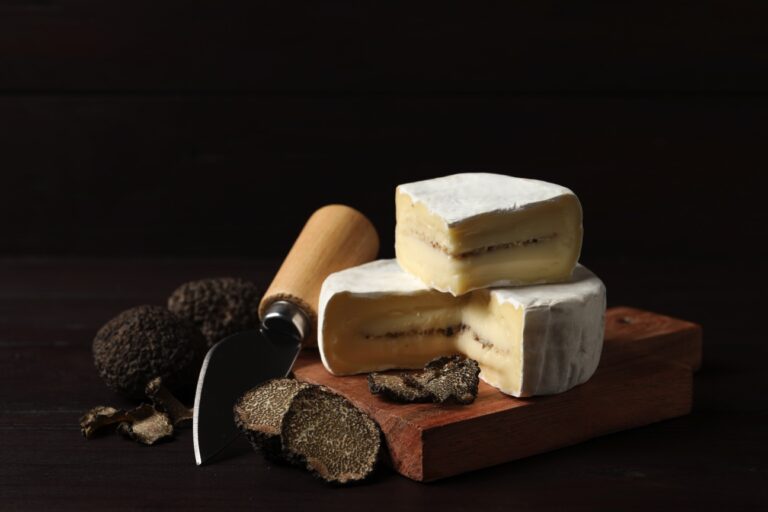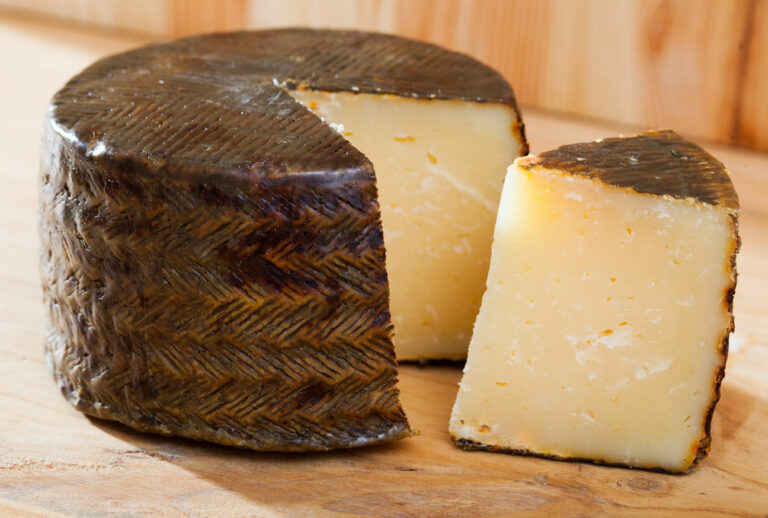
What is Gruyère?
Gruyère is a firm pale yellow Swiss cheese with few to no “eyes.” It is one of the most well-known cheeses to hail from Switzerland and is named after the Swiss town of Gruyères.
In order to produce its notable taste, Gruyère is traditionally aged for at least 4-5 months. This allows enough time to develop a distinct flavor that evolves with maturity.
Although it can be eaten raw, it also melts quite easily making it a perfect cheese for any dish requiring melted cheese.
Are Gruyère and Swiss cheese the same thing?
Not exactly. Although Gruyère is technically a type of Swiss cheese because it originated in Switzerland, it is not the typical “holey” Swiss cheese that you’d expect to see a cartoon mouse eat. That description goes to Emmentaler, the Swiss cheese. There are over 475 types of Swiss cheese besides Gruyère and Emmentaler including Engelberg cheddar, L’Etivaz, Sbrinz, Scharfe Maxx, Tête de Moine and Vacherin Fribourgeois.
How does it taste?
Gruyère has a rich and creamy yet slightly salty taste. Like many kinds of artisanal cheese, its flavor develops and matures over time. Less mature versions are creamier and sweeter with a bit of a nutty flavor. They are also known to have hints of caramel and hazelnut.
More mature versions have a bolder, earthier flavor profile. When fully matured, the texture becomes a bit grittier attributed to loss of moisture.

What is Gruyère similar to?
It is most similar to other Swiss or Alpine cheeses as well as a few other European cheeses such as:
- Beaufort – a firm French cheese made from cow’s milk
- Emmental – a semi-hard Swiss cheese made from cow’s milk
- Jarlsberg – a Norweigian cow’s milk cheese with holes
- comté – a semi-hard French cheese made from cow’s milk
- raclette – a semi-hard Swiss cheese made from cow’s milk best known for melting
What does Gruyère go well on?
Although it can be eaten on its own, this Swiss cheese can also be combined with other cheeses and used as a topping for many dishes. Add it to:
- charcuterie boards
- croque monsieur (or any melt sandwich)
- fondue
- French onion soup
- mac & cheese
What does it pair well with?
Gruyère pairs well with a variety of different wines, depending on its maturity. Younger versions are best paired with sparking wines, whites and lighter-bodied reds:
- champagne
- sauvignon blanc
- chianti
- pinot noir
- lambrusco
- merlot
More mature versions are a better match for sweeter, bolder wines:
- port
- reisling
- Burgundy
- bordeaux
- cabernet sauvignon











